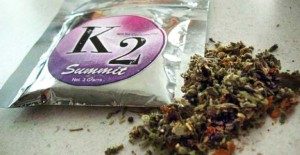Ludwig, Mike. “Marijuana Legalization Debate Turns Heads on Campus.” Alt-Press Watch. Proquest, 28 Jan. 2008. Web. 19 July 2015.
Mike Ludwig is a writer and investigative reporter for Truthout, a nonprofit news organization in the United States. In this article, Ludwig writes about the “Heads vs. Feds” debate that took place at Ohio University. The debate was between Steve Hager, former editor for High Times (a magazine dedicated to the fight for marijuana legalization), and head of New York City’s Drug Enforcement Administration, Robert Stutman. They disputed the legalization of marijuana and its pros and cons on society.
Ludwig begins by saying that Hager motivated the students of Ohio University to become activists for the cause of legalizing marijuana and suggested that they become serious about it if they really want to see a change. According to Ludwig, Hager argued that the positive factors of marijuana outweigh the negatives and that marijuana can have valuable medicinal and spiritual properties. Ludwig reports that Hager thinks the black market encourages corruption and drug trafficking, and with the legalization of marijuana, the two of these would slow if not completely end.
According to Ludwig, Hager’s opponent, Stutman, disagrees and claims that marijuana should not be made legal. The reason behind this being that “legalizing marijuana validates a drug that intoxicates, impairs depth perception, and can lead to health problems such as lung cancer.” Seeing that marijuana can be tremendously harmful to our bodies, Stutman insists that America is not ready to repeat the mistake that was made with tobacco and alcohol.
Ludwig says that both Hager and Stutman agree that drug use on its own should not warrant a prison sentence, however, Stutman does not side with the use of marijuana recreationally. Hager concludes his argument with, “We have built the largest prison system in the world in my lifetime. I think doing 10 years in the prison system is worse for you than smoking a joint.”
I found this article helpful because the two debaters certainly have “the credentials for their respective positions,” as Ludwig states. Both of them are experts in their fields and have contrasting opinions on the legalization of marijuana that are more unique than those I had read in other articles. It was interesting to me to hear that DEA Officer Stutman believed that if marijuana were to become legal, it would add onto the list of mistakes America has made, the other two being alcohol and tobacco. I think this source could be of use to those who are thinking of writing on how marijuana affects society as a whole.


